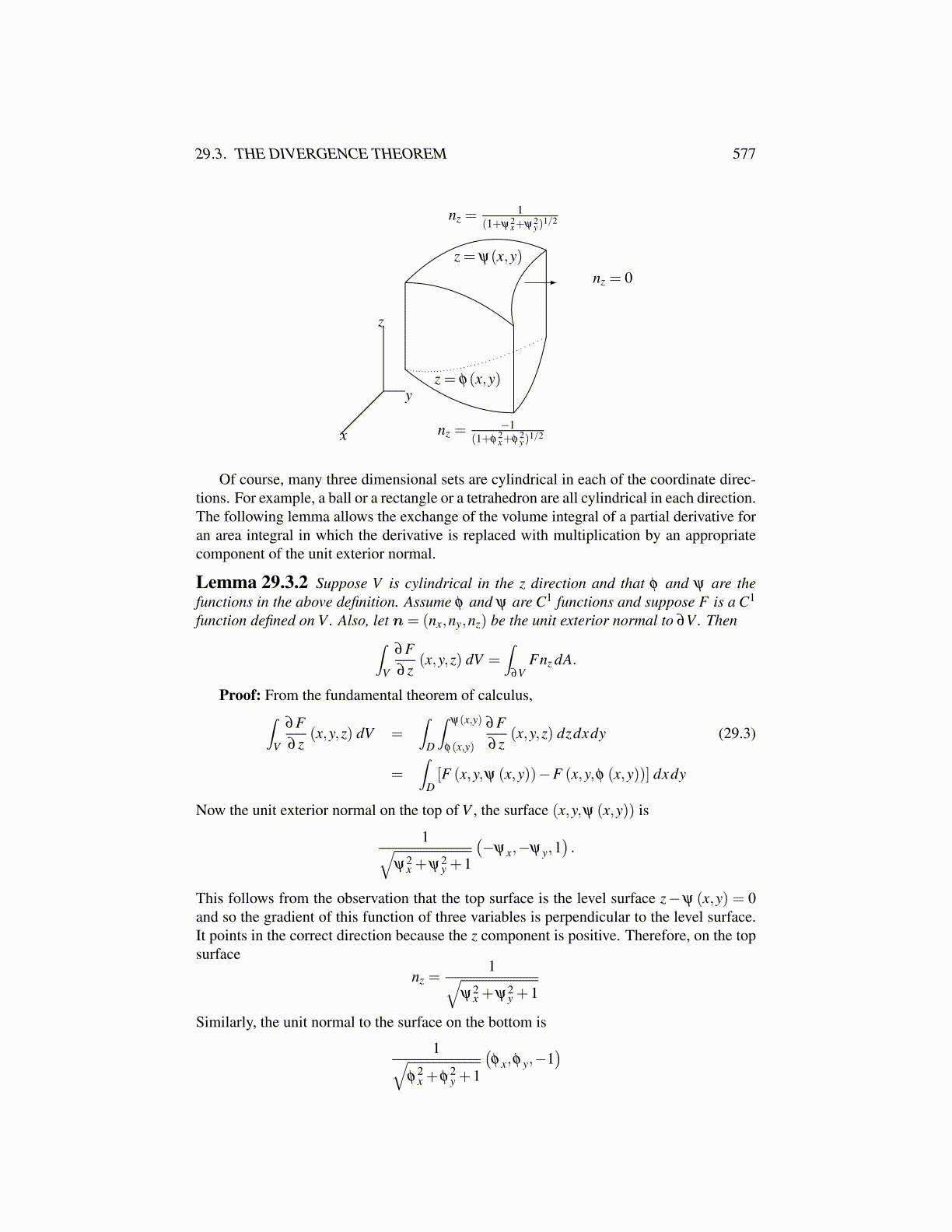
29.4. APPLICATIONS OF THE DIVERGENCE THEOREM 577
=
∣∣∣∣ 1v(B(x,δ ))
∫B(x,δ )
(divF (x)−divF (y)) dV∣∣∣∣
≤ 1v(B(x,δ ))
∫B(x,δ )
|divF (x)−divF (y)| dV
≤ 1v(B(x,δ ))
∫B(x,δ )
ε
2dV < ε
whenever ε is small enough, due to the continuity of divF . Since ε is arbitrary, this shows29.4.
How is this definition independent of coordinates? It only involves geometrical notionsof volume and dot product. This is why. Imagine rotating the coordinate axes, keepingall distances the same and expressing everything in terms of the new coordinates. Thedivergence would still have the same value because of this theorem.
29.4 Applications of the Divergence Theorem29.4.1 Hydrostatic PressureImagine a fluid which does not move which is acted on by an acceleration g. Of course theacceleration is usually the acceleration of gravity. Also let the density of the fluid be ρ , afunction of position. What can be said about the pressure p in the fluid? Let B(x,ε) be asmall ball centered at the point x. Then the force the fluid exerts on this ball would equal
−∫
∂B(x,ε)pndA.
Here n is the unit exterior normal at a small piece of ∂B(x,ε) having area dA. By thedivergence theorem, (see Problem 1 on Page 591) this integral equals
−∫
B(x,ε)∇pdV.
Also the force acting on this small ball of fluid is∫B(x,ε)
ρgdV.
Since it is given that the fluid does not move, the sum of these forces must equal zero. Thus∫B(x,ε)
ρgdV =∫
B(x,ε)∇pdV.
Since this must hold for any ball in the fluid of any radius, it must be that
∇p = ρg. (29.5)
It turns out that the pressure in a lake at depth z is equal to 62.5z. This is easy to seefrom 29.5. In this case, g = gk where g = 32 feet/sec2. The weight of a cubic foot ofwater is 62.5 pounds. Therefore, the mass in slugs of this water is 62.5/32. Since it is acubic foot, this is also the density of the water in slugs per cubic foot. Also, it is normally